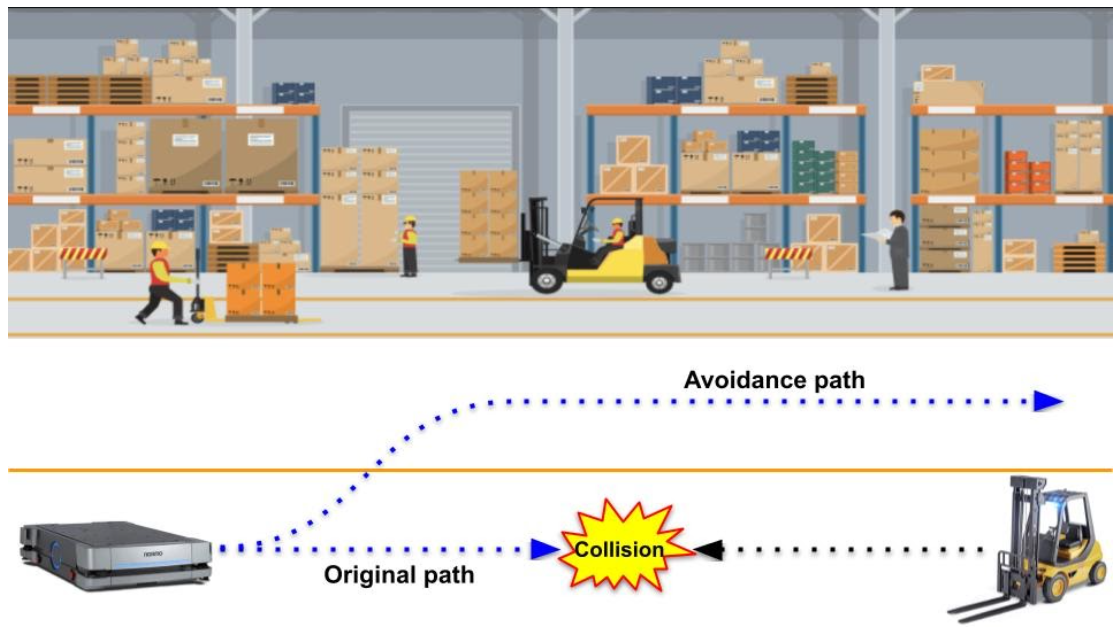The use case below was developed by the team to further illustrate the goals of the project, and the benefits it may create for real-life industrial environments. It includes different scenarios in which mobile robots must avoid various obstacles, and is told from the perspective of a warehouse manager deploying a fleet of mobile robots fitted with our collision avoidance system:
At the start of the workday, the manager deploys a fleet of robots equipped with the newest collision avoidance system. He assigns the robots a series of tasks and associated waypoints using a command module, which the robots will autonomously complete. Upon the command from the manager, the robots plan an optimal path to visit all the commanded waypoints. Then, they are deployed from their storage area and begin moving autonomously toward their commanded goal points.
On its way to the next task endpoint, one of the robots detects an obstacle in its path. By analyzing data from its onboard sensors, the robot determines both the obstacle’s position and its classification: a forklift. Using this information, the robot predicts the future motion of the forklift and chooses an optimal avoidance strategy. Then the robot adjusts its path to avoid the forklift, and continues on its way.

Another robot moves in parallel with a pedestrian toward different waypoints. At some point, the robot predicts that the pedestrian will make a turn and cut off the robot’s path. The robot slows down based on this prediction, which turns out to be true. The robot eventually passes the pedestrian and continues towards its commanded waypoint.
At the end of the day, the manager reviews the total tasks completed by the robots. He sees that each robot finished 200 delivery tasks on average, which is 5% higher than the previous average, indicating higher productivity. He notes that despite encountering numerous obstacles, each robot reacted more quickly and efficiently during potential collision scenarios, which reduced time delays. With the help of this new collision avoidance system, the manager improves the warehouse’s overall productivity.